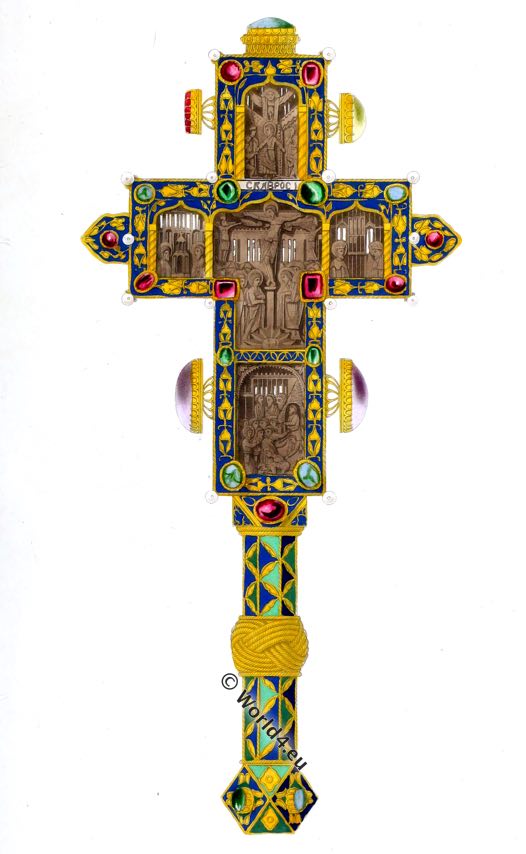Byzantine. Greek, Latin clergy. Ascetics and monks. The blessing of the Greeks and the Latins. The Emperor of the Eastern Roman Empire and the officers of his retinue. The Roman Consul. The patrician. Secular and ecclesiastical instruments.
Category: 10th Century
Costume and Fashion History of the 10th century. Culture of the High Middle Ages. Age of the Carolingians, Byzantium, Capetians.
The dress and decorations of the Anglo-Saxons. 8th to 11th century
The dress of the Anglo-Saxons. 8th to 11th century
Costumes of the spiritual orders. 10th to 18th century.
Monastic habit of spiritual orders from Poland, Germany and Flanders from the 10th to the 18th century.
Gallic fabrics and embroideries. Merovingian fashion.
Gallic fabrics and embroideries. Gaul Plate 8.
Figures of Ecclesiastics of the cathedral of Chartres.
The Cathedral of Chartres, founded in the earliest times of Christianity in the west, is remarkable for the many misfortunes it has sustained.
Cross from Mount Athos. Monastery of Caracalla.
CROSS FROM MOUNT ATHOS. BEFORE the Christian era, Mount Athos was celebrated for the length of its shadow (ingenti tellurem proximus umbra vestit. Stat.), which was said to reach as… Read More
Norman and Anglo-saxon costume period. Medieval England 1066-1154.
The Norman Period. Medieval fashion and costume history of England 1066-1154. William the Conqueror, William II., Henry I., Stephen.
The Anglo-Saxon fashion and costume history. England c. 460 to 1066.
The Saxons commenced their conquests during the fifth century, but it was not until the year 720 that the earliest MS. preserved to us saw the light.
Armed infantry warrior in brigandine. France 10th century.
Armed infantry warrior in brigandine. France 10th century. Guerrier arme de la Brigantine. X° Siècle.
Viking of the Varangian Guard. Byzantine. Imperial bodyguard.
At the end of the tenth century the Varangian Guard, an Imperial bodyguard, were a conspicuous, picturesque, and useful adjunct to the Byzantine Court.










